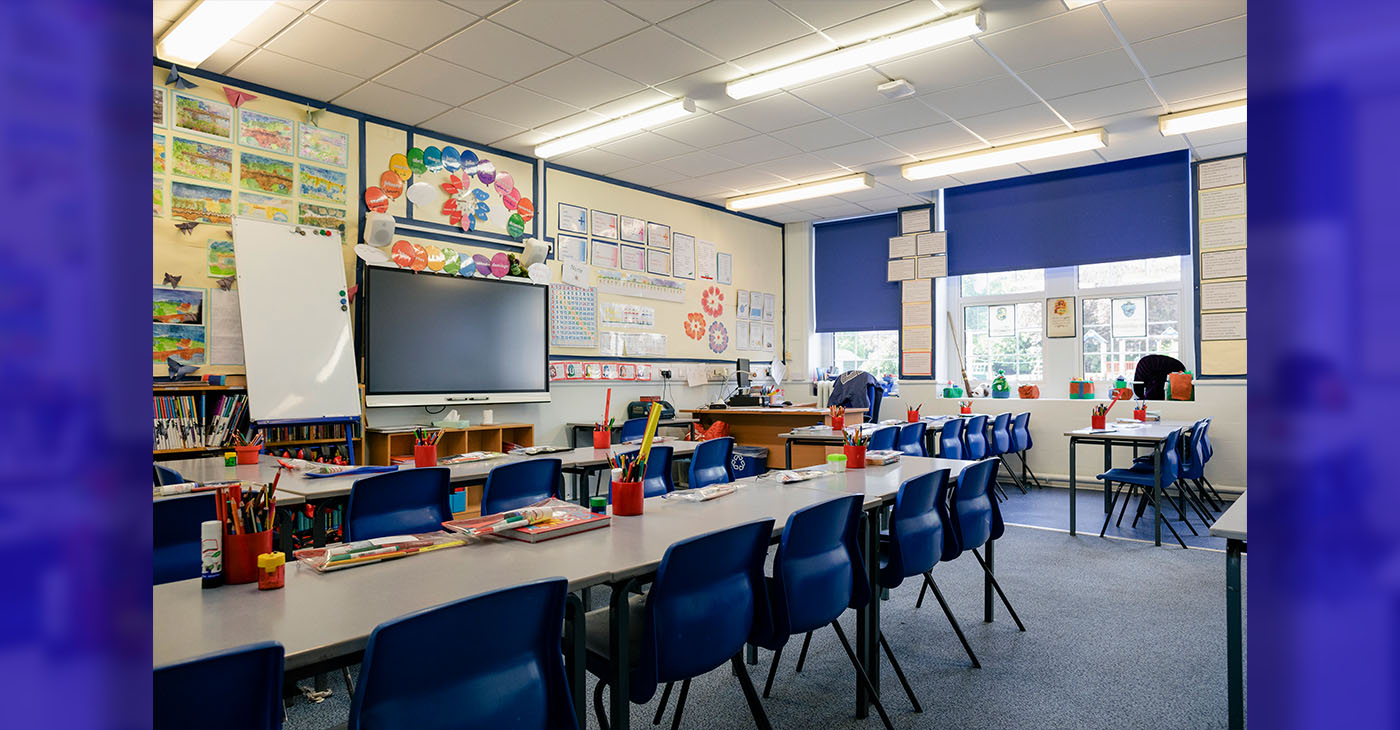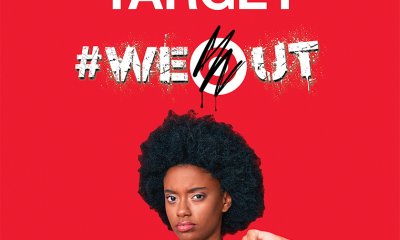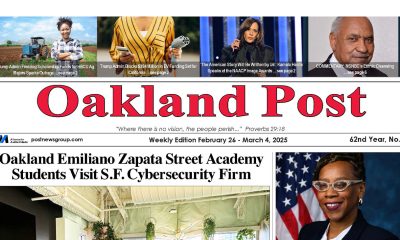#NNPA BlackPress
COMMENTARY: Racial profiling remains a daily dilemma for LAPD New report cites evidence of police bias
NNPA NEWSWIRE — Whites are caught with illegal drugs more often. However, according to the new analysis, Whites were more likely to be found with drugs, weapons and other illicit articles, at 20 percent of all searches, whereas Blacks were only at 17 percent and Latinx at 16 percent. The count included both pat-down and vehicle searches. The “Brothers, Sons, Selves” coalition’s manager, David Turner, remembered when his father told him to fear the cops, but didn’t understand why until an officer held a gun to him during a random traffic stop.
By Isabell Rivera, OW Contributor
Although crime in Los Angeles has somewhat decreased over the years, certain areas—such as South Los Angeles—have witnessed an increase. And with high crime comes high police activity.
The issue
Since racial diversity between Whites and persons of color is practically non-existent in certain neighborhoods, the targets of police detainments/arrests are mostly people of color. Being at the wrong place, at the wrong time, and wearing the wrong colored clothes, or just being in the car, waiting for the traffic light to switch, or having broken headlights, might all be reasons to be stopped by the police. However, the color of someone’s skin might just be enough of a reason to look like a suspect.
According to a new LA Times analysis, more than 20 percent of vehicle stops that involved African Americans were for equipment violation, such as a broken taillight or tinted windows were the reasons, compared to 11 percent of Whites who were stopped. Those types of violations can serve as a motive for the Los Angeles Police Department (LAPD) to look for more that isn’t as obvious at first glance. Those so-called “pre-textual traffic stops” are legal but are taken with a grain of salt; since critics say that it gives law enforcement too much freedom to decide based on instinct versus evidence.
Metro Division under scrutiny
One division of the LAPD has been under scrutiny: the elite Metropolitan (Metro) division. They are trained to perform various tasks in regard to diverse crime-fighting duties, such as surveillance, counter terrorism, as well as crowd control. Recently, they’ve been assisting the South Bureau to help fight crimes associated with gangs and drugs.
“We’re trying to stop drive-by shootings,” Capt. Jonathan Tippet of Metro told the LA Times. “If we’re not here, it’s going to have a negative impact and allow people to go back to committing crime. If we’re not here to keep the peace, we’re going to have bloodshed.”
The problem is that the “stop-and-frisk” procedures mostly happen to people of color. In a city that is just 9 percent Black, 49 percent of the drivers stopped by the Metro division were Black.
“African-Americans were not the quote-unquote target. And that’s my concern with the data point and how it’s being interpreted — that we just went out looking for African Americans,” LAPD Chief Michel Moore said. “That’s not what crime suppression was involved in.”
Statistics of other races that were stopped by Metro: Latinx at 44 percent, account for 49 percent of the city’s population. Whites on the other hand, accounted for less than 4 percent of the drivers stopped but are 28-percent city population.
Whites are caught with illegal drugs more often. However, according to the new analysis, Whites were more likely to be found with drugs, weapons and other illicit articles, at 20 percent of all searches, whereas Blacks were only at 17 percent and Latinx at 16 percent. The count included both pat-down and vehicle searches. The “Brothers, Sons, Selves” coalition’s manager, David Turner, remembered when his father told him to fear the cops, but didn’t understand why until an officer held a gun to him during a random traffic stop.
“We’re watching all these movies, all these things that glorify law enforcement, we’re thinking they’re cool, but my dad [told me] ‘We need to be afraid,’” Turner said in an interview. “This is because of the things he experienced here as a Black man in Los Angeles. That trauma he had, he passed to my sister and I.”
According to the LA Times, the LAPD’s former constitutional policing advisor, Arif Alikhan, said that the conducted analysis doesn’t account for the difficulties a police officer has in gauging the situation.
“We don’t pull people over based on race. We’re not supposed to do that,” Alikhan said. “It’s illegal. It’s unconstitutional. And that’s not the basis [on which] we do it.”
Alberto Retana, president of Community Coalition, wasn’t surprised by the data, and gave a statement on behalf of the social justice coalition PUSH-LA, which stands for Promoting Unity Safety & Health Los Angeles, that advocates to reform policing.
“To communities of color across Los Angeles, the article’s data is unfortunately unsurprising and verifies what we know to be true about the racial profiling happening by the LAPD. These vehicle searches are just the tip of the iceberg as the LAPD also has a long track record of aggressively searching the homes and schools of people of color,”
Retana said. “This clear evidence of racial profiling has many harmful implications for Black and Brown families, including emotional and material impact when they get unjustly tangled in the mass incarceration system.
Activists demand ‘real reform’
“The LAPD’s response that they don’t pull over and search people based on race should be met with heavy skepticism, especially given that of the 385,000 stops analyzed by the Times report, three quarters of them involved Black and Latinx people,” Retana continued. “Our community members in South LA and other overpoliced communities are terrified of the police and don’t feel protected or served. We want real reform and
the PUSH LA ‘Reimagine Protect and Serve’ coalition will be sending a letter to Mayor Garcetti and Chief Moore with three key demands.”
The purpose
The first mission that’s on the LAPD’s agenda is the prevention of crime—especially gang-related crimes. In 2015, Mayor Garcetti and then-Chief Charlie Beck executed the “traffic stop and search” method to combat gang violence – mostly shootings – in South LA.
And since most gangs in South LA are Black, people of color become a target automatically. However, Metro said, it’s hard to determine what skin color the drivers have when it’s dark outside and the division only stops drivers if there is a reason for it, such as paper license plates, parking violations or broken headlights. However, if the colors of their clothing indicate gang association, they’ll continue to search the vehicle and passengers for weapons and drugs.
It’s a fine line between following procedures and following instinct, but because the Metro Division has been scrutinized just like the New York City Police Department (NYPD) a few years back when they introduced the stop-and-frisk, Mayor Eric Garcetti wanted to pull them back completely, which resulted in fear in the South Bureau that
crimes will rise – which they did. Shootings in South LA have increased, even before the fatal shooting of rapper Nipsey Hussle (Ermias Asghedom). According to news outlets, the month of March accounted for 26 shootings and 10 homicides.
‘Picking up the pieces’
“That’s 36 families left picking up the pieces,” Moore said via Twitter. “We will work aggressively with our community to quell this senseless loss of life.”
The “stop-and-frisk” tactics in New York City resulted in 50.6 percent of Blacks being stopped, although Blacks only accounted for 25.6 percent of the city’s population. The Latinx population of New York City accounts for 23.7 percent but 33 percent of Hispanics were stopped. Again, Whites had the lowest percentage: accounting for 43.4 percent of the city’s population, yet only 12.9 percent of those who were stopped randomly, according to the American Civil Liberties Union (ACLU).
The “stop-and-frisk” procedures have since been reduced, as a result of a federal lawsuit in 2013, which former federal court Judge Shira Scheindlin ruled to be unconstitutional.” Scheindlin said in an interview that those tactics weren’t effective and that didn’t stop crime.
Deputy Chief Dennis Kato said in an interview that Metro officers stop a large number of Black drivers because many violent crime suspects are Black, the LA Times reported.
Kato told the LA Times that if Black gangs are involved, Metro officers will use traffic violations to stop, “African-American males ages 16 to 24 who dress or look like gang members.”
Social Biases
When it comes to racial profiling—although most of this might just be subconscious—it is deeply embedded in most of society and has something to do with the fact of how people have been raised.
According to researchers at the University of Toronto and the Ontario Institute for Studies in Education, racial bias forms in infancy. Studies found that infants as young as six months old feel more comfortable around the same race if being overwhelmingly exposed, and therefore favor people who look like them. However, the studies also point out that infants who are exposed to people who look different, develop deep-rooted discomfort.
According to the ACLU, in a study conducted by the University of California and the University of Chicago that “recreated the experience of a police officer confronted with a ‘potentially’ dangerous suspect,” the results were interesting.
In the study, “participants fired on an armed target more quickly when the target was African American than White and decided not to shoot an unarmed target more quickly when the target was White than when African-American. Participants failed to shoot an armed target more often when that target was White than when the target was
African American. If the target was unarmed, participants mistakenly shot the target more often when African American than when White. Shooting bias was greater among participants who held a strong cultural stereotype of African Americans as aggressive, violent, and dangerous.”
Chief Moore responds
“There is a conversation… that the current presentation of data we are talking about is having a terribly corrosive effect on people of color, particularly African-Americans, and that concerns me as a chief,” Moore said. “I hear and feel the trauma this has reignited,
the injury, the concern that somehow [the] LAPD is slipping back into its old ways.”
Retana and Moore met in March to discuss the removal of Metro. “What we’re finding is that African-American residents are afraid of police officers, and that break of trust undermines public safety,” Retana said, as the LA Times reported.
Regardless of crime prevention resulting from the “stop-and-frisk” procedures in South LA, for many Blacks who reside there insist that “driving while Black” is a grim reality confirmed by statistics.
“Many police practices may be useful for fighting crime — preventive detention or coerced confession, for example—but because they are unconstitutional, they cannot be used, no matter how effective,” Scheindlin said in the plaintiff against New York City, in the 2013 lawsuit.
Change in sight
After the LA Times investigated and reported that the random traffic stops performed by Metro were considered “bias” at most, the LAPD said to cut back.
Moore issued a statement and told the Times the vehicle stops performed by Metro were not proven successful, accounting for one arrest per 100 cars stopped, as it was adding more stress and tension to drivers who felt like being selected depending on their race.
Officers of the Metro Division, who number approximately 200, will focus on wanted suspects for violent offenses instead, and use other methods besides traffic stops to make arrests.
The new changes will take place in late November of 2019 and were directed by community leaders who criticized the Metro Division’s “stop and search” methods.
Retana told the LA Times that the stop and search methods by the LAPD have caused quite the distress on the Black and Latinx community in South LA.
“These changes to Metro’s policing style in South Los Angeles vindicate what our community has been saying all along about the highly imbalanced use of pre-textual stops on Black and Brown people,” said Retana, on behalf of PUSH LA coalition.” We need to ensure that there’s proof that the stops by Metro are in fact ending, which means
the LAPD must be transparent in its release of real data in regular reports.”
‘Reimagine Protect & Serve’
In 2017, the number of cars stopped and searched by Metro rose from a few thousand cars prior to 63,000, which are about 12 percent of all LAPD traffic stops.
Opponents of the LAPD, and its divisions, criticized Metro saying it reminds of the crucial times of the past where the police targeted mostly minorities.
Moore said in a statement regarding the Times’ analysis that it didn’t cover all aspects, but that the report raised concerns he will take a closer look at.
“We’re aware that the disparate impact on communities of color, particularly in South Los Angeles, raises concerns about trust and confidence that this is a department that’s sensitive to what our interaction with them are,” he said. “I think…what traffic stops
represent is a small area of what our work is. Our work is in many different fronts in regard to public safety, including prevention and intervention efforts.”
Community Coalition, ACLU work in tandem Since the ACLU and CoCo were among the only local social justice organizations that demanded Mayor Garcetti to pull Metro back from South LA completely, or at least cut back on random traffic stops and searches, vehicle stops have been down by 11 percent by all LAPD officers in comparison to the same period last year. In a statement issued by Garcetti to the Times, he said, “I look
forward to our Police Commission and department leaders using this information to improve best practices, and I expect the department to work consciously and evenhandedly to earn the trust of every Angeleno, every day, with every interaction.”
#NNPA BlackPress
Recently Approved Budget Plan Favors Wealthy, Slashes Aid to Low-Income Americans
BLACKPRESSUSA NEWSWIRE — The most significant benefits would flow to the highest earners while millions of low-income families face cuts
By Stacy M. Brown
BlackPressUSA.com Senior National Correspondent
The new budget framework approved by Congress may result in sweeping changes to the federal safety net and tax code. The most significant benefits would flow to the highest earners while millions of low-income families face cuts. A new analysis from Yale University’s Budget Lab shows the proposals in the House’s Fiscal Year 2025 Budget Resolution would lead to a drop in after-tax-and-transfer income for the poorest households while significantly boosting revenue for the wealthiest Americans. Last month, Congress passed its Concurrent Budget Resolution for Fiscal Year 2025 (H. Con. Res. 14), setting revenue and spending targets for the next decade. The resolution outlines $1.5 trillion in gross spending cuts and $4.5 trillion in tax reductions between FY2025 and FY2034, along with $500 billion in unspecified deficit reduction.
Congressional Committees have now been instructed to identify policy changes that align with these goals. Three of the most impactful committees—Agriculture, Energy and Commerce, and Ways and Means—have been tasked with proposing major changes. The Agriculture Committee is charged with finding $230 billion in savings, likely through changes to the Supplemental Nutrition Assistance Program (SNAP), also known as food stamps. Energy and Commerce must deliver $880 billion in savings, likely through Medicaid reductions. Meanwhile, the Ways and Means Committee must craft tax changes totaling no more than $4.5 trillion in new deficits, most likely through extending provisions of the 2017 Tax Cuts and Jobs Act. Although the resolution does not specify precise changes, reports suggest lawmakers are eyeing steep cuts to SNAP and Medicaid benefits while seeking to make permanent tax provisions that primarily benefit high-income individuals and corporations.
To examine the potential real-world impact, Yale’s Budget Lab modeled four policy changes that align with the resolution’s goals:
- A 30 percent across-the-board cut in SNAP funding.
- A 15 percent cut in Medicaid funding.
- Permanent extension of the individual and estate tax cuts from the 2017 Tax Cuts and Jobs Act.
- Permanent extension of business tax provisions including 100% bonus depreciation, expense of R&D, and relaxed limits on interest deductions.
Yale researchers determined that the combined effect of these policies would reduce the after-tax-and-transfer income of the bottom 20 percent of earners by 5 percent in the calendar year 2026. Households in the middle would see a modest 0.6 percent gain. However, the top five percent of earners would experience a 3 percent increase in their after-tax-and-transfer income.
Moreover, the analysis concluded that more than 100 percent of the net fiscal benefit from these changes would go to households in the top 20 percent of the income distribution. This happens because lower-income groups would lose more in government benefits than they would gain from any tax cuts. At the same time, high-income households would enjoy significant tax reductions with little or no loss in benefits.
“These results indicate a shift in resources away from low-income tax units toward those with higher incomes,” the Budget Lab report states. “In particular, making the TCJA provisions permanent for high earners while reducing spending on SNAP and Medicaid leads to a regressive overall effect.” The report notes that policymakers have floated a range of options to reduce SNAP and Medicaid outlays, such as lowering per-beneficiary benefits or tightening eligibility rules. While the Budget Lab did not assess each proposal individually, the modeling assumes legislation consistent with the resolution’s instructions. “The burden of deficit reduction would fall largely on those least able to bear it,” the report concluded.
#NNPA BlackPress
A Threat to Pre-emptive Pardons
BLACKPRESSUSA NEWSWIRE — it was a possibility that the preemptive pardons would not happen because of the complicated nature of that never-before-enacted process.

By April Ryan
President Trump is working to undo the traditional presidential pardon powers by questioning the Biden administration’s pre-emptive pardons issued just days before January 20, 2025. President Trump is seeking retribution against the January 6th House Select Committee. The Trump Justice Department has been tasked to find loopholes to overturn the pardons that could lead to legal battles for the Republican and Democratic nine-member committee. Legal scholars and those closely familiar with the pardon process worked with the Biden administration to ensure the preemptive pardons would stand against any retaliatory knocks from the incoming Trump administration. A source close to the Biden administration’s pardons said, in January 2025, “I think pardons are all valid. The power is unreviewable by the courts.”
However, today that same source had a different statement on the nuances of the new Trump pardon attack. That attack places questions about Biden’s use of an autopen for the pardons. The Trump argument is that Biden did not know who was pardoned as he did not sign the documents. Instead, the pardons were allegedly signed by an autopen. The same source close to the pardon issue said this week, “unless he [Trump] can prove Biden didn’t know what was being done in his name. All of this is in uncharted territory. “ Meanwhile, an autopen is used to make automatic or remote signatures. It has been used for decades by public figures and celebrities.
Months before the Biden pardon announcement, those in the Biden White House Counsel’s Office, staff, and the Justice Department were conferring tirelessly around the clock on who to pardon and how. The concern for the preemptive pardons was how to make them irrevocable in an unprecedented process. At one point in the lead-up to the preemptive pardon releases, it was a possibility that the preemptive pardons would not happen because of the complicated nature of that never-before-enacted process. President Trump began the threat of an investigation for the January 6th Select Committee during the Hill proceedings. Trump has threatened members with investigation or jail.
#NNPA BlackPress
Reaction to The Education EO
BLACKPRESSUSA NEWSWIRE — Meanwhile, the new Education EO jeopardizes funding for students seeking a higher education. Duncan states, PellGrants are in jeopardy after servicing “6.5 million people” giving them a chance to go to college.

By April Ryan
There are plenty of negative reactions to President Donald Trump’s latest Executive Order abolishing the Department of Education. As Democrats call yesterday’s action performative, it would take an act of Congress for the Education Department to close permanently. “This blatantly unconstitutional executive order is just another piece of evidence that Trump has absolutely no respect for the Constitution,” said Rep. Maxine Waters (D-CA) who is the ranking member on the House Financial Services Committee. “By dismantling ED, President Trump is implementing his own philosophy on education, which can be summed up in his own words, ‘I love the poorly educated.’ I am adamantly opposed to this reckless action, said Rep. Bobby Scott who is the most senior Democrat on the House Education and Workforce Committee.
Morgan State University President Dr. David Wilson chimed in saying “I’m deeply concerned about efforts to shift federal oversight in education back to the states, particularly regarding equity, justice, and fairness. History has shown us what happens when states are left unchecked—Black and poor children are too often denied access to the high-quality education they deserve. In 1979 then President Jimmy Carter signed a law creating the Department of Education. Arne Duncan, former Obama Education Secretary, reminds us that both Democratic and Republican presidents have kept education a non-political issue until now. However, Duncan stressed Republican presidents have contributed greatly to moving education forward in this country.
During a CNN interview this week Duncan said during the Civil War President Abraham “Lincoln created the land grant system” for colleges like Tennessee State University. “President Ford brought in IDEA.” And “Nixon signed Pell Grants into law.” In 2001, the No Child Left Behind Act was signed into law by President George W. Bush which increased federal oversight of schools through standardized testing. Meanwhile, the new Education EO jeopardizes funding for students seeking higher education. Duncan states, PellGrants are in jeopardy after servicing “6.5 million people” giving them a chance to go to college. Wilson details, “that 40 percent of all college students rely on Pell Grants and student loans.”
Rep. Alma Adams (D-NC) says this Trump action “impacts students pursuing higher education and threatens 26 million students across the country, taking billions away from their educational futures. Meanwhile, During the president’s speech in the East Room of the White House Thursday, Trump criticized Baltimore City, and its math test scores with critical words. Governor West Moore, who is opposed to the EO action, said about dismantling the Department of Education, “Leadership means lifting people up, not punching them down.”
-

 #NNPA BlackPress3 weeks ago
#NNPA BlackPress3 weeks agoTarget Takes a Hit: $12.4 Billion Wiped Out as Boycotts Grow
-

 Activism3 weeks ago
Activism3 weeks agoUndocumented Workers Are Struggling to Feed Themselves. Slashed Budgets and New Immigration Policies Bring Fresh Challenges
-

 #NNPA BlackPress3 weeks ago
#NNPA BlackPress3 weeks agoBREAKING Groundbreaking Singer Angie Stone Dies in Car Accident at 63
-

 #NNPA BlackPress3 weeks ago
#NNPA BlackPress3 weeks agoApple Shareholders Reject Effort to Dismantle DEI Initiatives, Approve $500 Billion U.S. Investment Plan
-

 #NNPA BlackPress3 weeks ago
#NNPA BlackPress3 weeks agoNAACP Legend and Freedom Fighter Hazel Dukes Passes
-

 Activism3 weeks ago
Activism3 weeks agoOakland Post: Week of February 26 – March 4, 2025
-

 #NNPA BlackPress3 weeks ago
#NNPA BlackPress3 weeks agoSeniors Beware: O’Malley Says Trump-Musk Cuts Will Cripple Social Security
-

 #NNPA BlackPress3 weeks ago
#NNPA BlackPress3 weeks agoTrump Kicks the Ukrainian President Out of the White House
























































